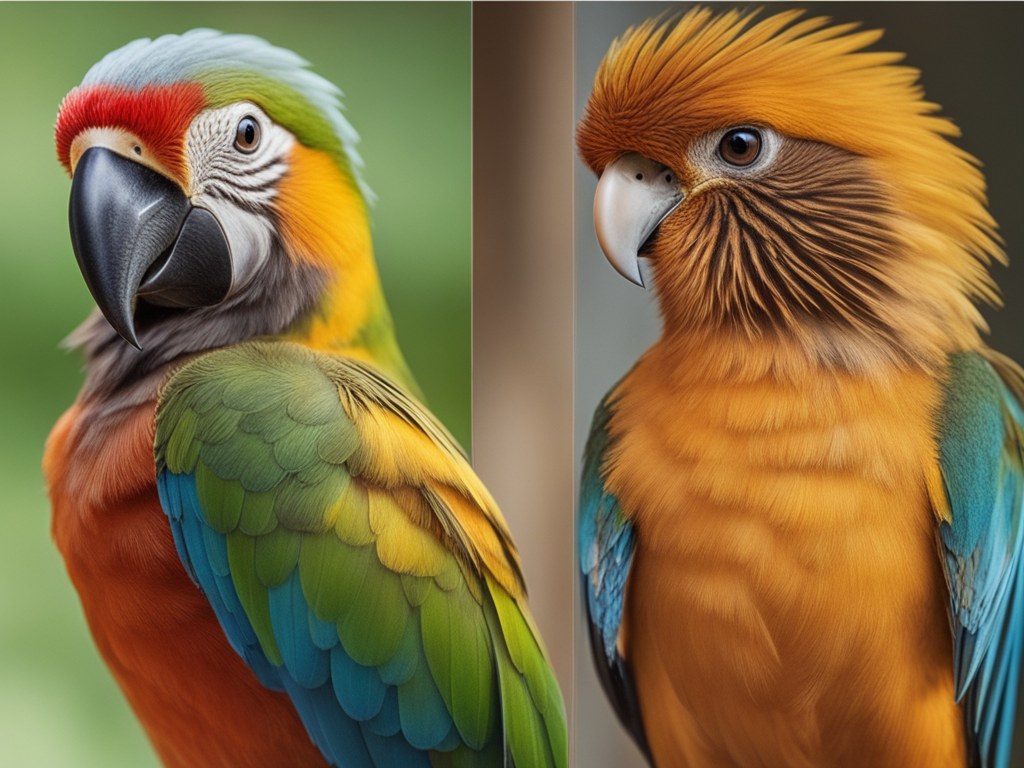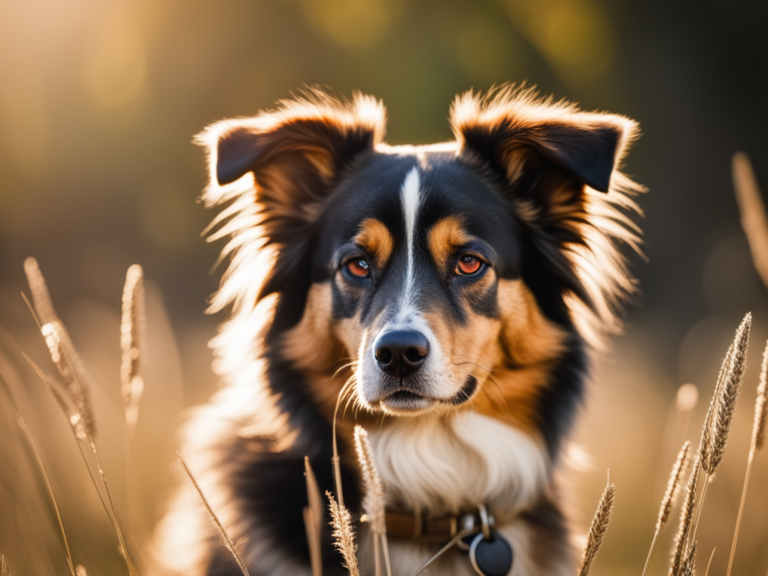Functional Feathers: Pet Birds And Their Feather’s Function

Pet Birds And Their Feather’s Function: They say “Birds of a feather flock together,” but have you ever wondered what makes those feathers so functional for our pet birds? Well, get ready to be amazed as we explore the fascinating world of functional feathers and their vital role in the lives of our feathered friends. From providing lift and drag for flight to keeping warm and shedding water, feathers have a multitude of functions that are essential for the survival and well-being of pet birds.
But that’s not all! Feathers also have the power to captivate and camouflage, depending on the bird’s needs. So, are you ready to uncover the secrets of these incredible plumage wonders? Let’s dive into the extraordinary world of functional feathers and discover the hidden marvels they hold.
Feather Structure
The structure of feathers in pet birds is a complex and fascinating arrangement of beta-keratin, with various components working together to provide both functionality and insulation. Feathers are essential for flight, as they generate lift and allow birds to maneuver through the air. They are found all over the bird’s body, including the wings, tail, and body.
Feathers have a unique structure that enables their various functions. At the base of each feather is the calamus, which is a hollow shaft that anchors the feather in the bird’s skin. The calamus also contains blood vessels that nourish the growing feather. The rachis, or the central shaft of the feather, provides support and stability. It is made of sturdy beta-keratin and runs the length of the feather.
Branching off the rachis are barbs, which are thin branches that give feathers their characteristic shape. The barbs have small hooks called barbules, which interlock with one another, creating a secure structure. This interlocking mechanism allows the feather to maintain its shape and function during flight.
Feathers can be categorized into two main types: plumulaceous and pennaceous. Plumulaceous feathers are soft and fluffy, providing insulation and warmth. They are found in the bird’s downy undercoat and help to regulate body temperature. Pennaceous feathers, on the other hand, have a more structured and rigid arrangement. They provide the necessary lift and control during flight, as well as protection for the bird’s body.
Feather Types
As we shift our focus to the subtopic of ‘Feather Types’, let’s explore the diverse array of feathers that serve different functions for pet birds. Feathers can be categorized into two main types: pennaceous and plumulaceous. Pennaceous feathers, also known as contour feathers, are the most common type found on birds. They have distinct vanes and tightly packed barbs, which give them a flat and structured appearance. Contour feathers are essential for flight and provide insulation, protection, and streamlining. The secondary flight feathers, located on the wing, are a prime example of pennaceous feathers.
On the other hand, plumulaceous feathers are fluffy and shapeless, with long and flexible barbs. These feathers lack the hooklets on the barbules that give pennaceous feathers their structure. Plumulaceous feathers are primarily responsible for insulation and maintaining body temperature. They are often found underneath the contour feathers, forming a cozy layer that traps air and retains heat. Down feathers, which are highly plumulaceous, are particularly effective in this regard.
Feather growth begins from the central shaft, known as the rachis. From the rachis, feather barbs branch out on either side, forming the feather vane. The barbs are further divided into barbules, which interlock with hooklets in pennaceous feathers, giving them their characteristic structure.
The evolution of feathers has played a significant role in the success of avian species. The development of pennaceous and plumulaceous feathers allowed birds to adapt to various environments and ecological niches. The different feather types found in pet birds serve a range of functions, including flight, insulation, and protection. Understanding these feather types is crucial for the proper care and management of pet birds, as it enables us to meet their specific needs.
Flight
Flight in birds is made possible by the specialized structure and strength of their wing feathers. These feathers have a uniform windproof surface that reduces air resistance and generates lift, allowing birds to achieve thrust and maneuverability during flight. The strength of the feathers enables birds to soar and maneuver in the air, providing them with the ability to take off, land, and perform precise flight maneuvers.
Wing Structure
Wing feathers play a critical role in the flight capabilities of pet birds. These specialized feathers are designed for aerodynamic efficiency and provide the necessary lift and propulsion for sustained flight. The structure of a wing feather consists of a stiff central shaft, called the rachis, which supports the vane. The vane is made up of numerous barbs that are interconnected by barbules, creating a uniform windproof surface.
Contour feathers, found on the wings, help streamline the bird’s body, reducing drag and improving flight efficiency. Bristle feathers, located at the base of the beak, aid in sensing air movements during flight. Additionally, some birds possess specialized feathers on their heads, such as crests or plumes, which may serve as visual signals or enhance flight stability. It is important to note that flightless birds have evolved differently, lacking the aerodynamic properties necessary for sustained flight.
Feather Strength
Feathers in pet birds are specifically engineered to withstand the forces of air resistance and provide the necessary strength for flight. Flight feathers, also known as remiges, are essential for various types of flight in birds. They have evolved to meet the specific needs of different types of birds and their evolutionary history.
The structure of flight feathers is highly specialized. Each feather grows from a single follicle and consists of a central shaft called the rachis, with barbs branching off from either side. The barbs themselves have smaller branches called barbules, which interlock to form a single, strong vane. This interlocking microstructure provides the necessary strength and stability during flight. The unique arrangement and shape of flight feathers enable birds to navigate the air with precision and maneuverability, contributing to their remarkable ability to fly.
Display
Feathers play a crucial role in the display behaviors of pet birds. These specialized feathers, such as the iridescent spirals in King Bird-of-Paradise or the colorful fans of Wood Ducks, are modified for visual exhibitions during courtship or aggressive interactions. Feathers can also serve a camouflage function, mimicking tree branches or showcasing vibrant hues like in male Eclectus Parrots. Understanding the diverse strategies for insulation in bird species sheds light on the unique function of display feathers and their importance in communication and breeding success.
Feather Structure and Function
Composed of beta-keratin and featuring a branching structure, pet bird feathers serve various functions such as flight, insulation, and weatherproofing. Feathers consist of a central shaft called the rachis, which branches off into barbs. These barbs have smaller structures called barbules, which are equipped with tiny hooks that interlock, giving the feather its structure. Body feathers provide insulation and temperature regulation, with fluffy plumulaceous regions trapping air for warmth.
Wing feathers are specialized for flight, with a uniform and windproof surface that allows for efficient movement through the air. Tail feathers, on the other hand, support precise steering during flight and can also be used for display or courtship. Additionally, feathers have a protective outer layer that provides waterproofing through a system of overlapping and interlocking barbules. This structure, combined with the airfoil shape of the wings, enables birds to navigate through different weather conditions while maintaining flight stability. Thus, the structure of feathers plays a crucial role in their various functions.
Importance of Preening
Regular preening is essential for pet birds to maintain the health and structure of their feathers, ensuring optimal functionality in flight and insulation. Preening plays a vital role in keeping bird feathers water-repellent, allowing them to stay buoyant and reducing their weight in flight. Birds expose their feathers to various environmental elements, including solar radiation and water. Through preening, birds carefully align the barbs and barbules of each feather, ensuring their interlocking structure remains intact.
This prevents water from penetrating the feather’s surface and reaching the bird’s skin, providing waterproofing. Additionally, preening allows birds to distribute natural oils throughout their feathers, further enhancing their water-resistant properties. Preening also helps birds maintain their body temperature by adjusting the position of feathers, allowing air to circulate beneath them. This helps keep birds cool in hot climates and warm in colder environments. Every single feather, including the primary feathers, requires regular attention to ensure its functionality and integrity.
Insulation
Birds utilize various strategies for insulation, employing different feather types and structures to trap air close to their bodies and regulate their body temperature. Insulation is crucial for birds to maintain their body temperature, especially in environments with extreme temperatures. Feathers play a significant role in this process, as they are specifically designed to provide insulation and protect birds from heat loss or gain.
One of the primary areas where birds rely on insulation is their wings and tail. These feathers not only enable flight but also serve as a barrier against temperature fluctuations. The layer beneath the outer contour feathers consists of down feathers, which are particularly effective at trapping body heat. The loose branching structure of down feathers creates air pockets that act as excellent insulators, preventing heat loss and maintaining a warm layer close to the bird’s body.
Additionally, contour feathers play a vital role in insulation. Their overlapping pattern creates a waterproof barrier that helps repel water and maintain insulation. This is especially important for birds that spend time in water, as wet feathers can lead to heat loss and hypothermia. Waterproof feathers not only provide insulation but also protect birds from the elements, keeping them dry and comfortable.
Different bird species have developed unique strategies for insulation based on their habitat and specific needs. For example, birds that live in cold climates or high altitudes often have thicker down feathers and more closely packed contour feathers to enhance insulation. Those that inhabit hot environments may have fewer down feathers and more lightweight contour feathers to facilitate heat dissipation.
Weatherproofing
Weatherproofing is an essential adaptation for birds to protect themselves from the elements and maintain their body temperature. Birds achieve weatherproofing through the structure and condition of their feathers. The arrangement of feathers on a bird’s body, wings, and tail plays a crucial role in weatherproofing. Feathers consist of a central shaft called the rachis, which extends from the quill knobs. The rachis branches out into barbs, which further branch into smaller structures known as barbules. The barbules have tiny hook-like structures called barbicels that interlock with each other, creating a waterproof and wind-resistant surface.
To maintain the weatherproofing of their feathers, birds engage in a behavior called preening or grooming. Preening involves the bird using its beak to carefully align and zip together the barbicels, restoring the interlocking structure. Additionally, birds possess an oil gland called the uropygial gland located near the base of their tail. This gland produces an oily substance that birds spread over their feathers during preening. The oil spreads across the outer layer of the feathers, creating a waterproof barrier.
Weatherproofing is particularly important for the leading and trailing edges of a bird’s wings. The leading edge, which faces the direction of flight, must withstand the impact of air resistance and water droplets. The trailing edge, on the other hand, is responsible for reducing air turbulence and preventing water from seeping into the feathers. By maintaining the weatherproofing of their feathers, birds can effectively regulate their body temperature and remain protected from the elements. Whether it is a duck gracefully gliding across the water or a common loon diving for fish, their waterproof feathers are vital for their survival in aquatic environments.
Feather Growth
During the growth process of feathers, small outgrowths of skin called papillae develop into highly branched structures composed of beta-keratin. Feathers are intricate and complex structures that serve multiple functions for pet birds. Feather growth involves the formation of both fluffy plumulaceous regions and structured pennaceous regions, each serving specific functions for birds.
The calamus forms the hollow base of a feather’s central shaft, providing stability and attachment to the bird’s skin. The rachis, the stiff central shaft, extends from the calamus and serves as the backbone of the feather. From the rachis, barbs branch off, creating the feather’s vanes. These barbs have interlocking barbules with small hooks, ensuring the feather’s structural integrity.
Feather growth is a continuous process for birds. As old feathers become worn or damaged, they are shed through molting, making way for new feathers to grow. During molting, the papillae produce proteins that form the branching patterns of the feathers. This process ensures that a bird’s feathers are always in optimal condition for their various functions.
Preening plays a crucial role in maintaining the health and structure of feathers. Birds use their beaks to align and interlock the barbs and barbules, ensuring that the feather’s interlocking structure remains intact. Preening also helps distribute natural oils produced by the preen gland, which waterproofs the feathers and further enhances their functionality.
Feather Evolution
Feather evolution has been a remarkable process of adaptation and innovation over millions of years. Feathers, initially evolving for insulation purposes, eventually became crucial for flight in birds. The evolution of functional feathers in birds has allowed them to perform various important functions.
Feathers did not initially evolve for flight. Plumulaceous feathers, which are soft and fluffy, preceded the development of pennaceous feathers, which are stiffer and better suited for flight. This suggests that the evolution of feathers was a gradual process, with flight feathers being a later adaptation.
Feather coloration serves multiple functions in birds. It can be used for sexual signaling, where bright and vibrant colors attract mates. Feather coloration can also play a role in mate choice, as birds may select partners based on their feather color patterns. Additionally, feathers can provide camouflage, allowing birds to blend in with their surroundings and avoid predators. Some bird species have specific feather coloration patterns that aid in species recognition, helping individuals identify members of their own species.
The evolution of flight feathers involved the incorporation of novel functions onto existing feathers. Feathers are adapted to provide lift, stability, and control during flight. The shape and structure of flight feathers have been finely tuned to optimize aerodynamic performance.
Feather growth ontogeny responds to separate selective forces, resulting in diverse feather phenotypes. This means that different species of birds may have different types of feathers that are specialized for their specific ecological niche.
Studying Feathers
To gain a comprehensive understanding of feathers, researchers employ various scientific approaches to study their anatomy, development, adaptation, and evolution. Feathers serve different functions in birds, allowing them to fly, regulate body temperature, display for courtship, and provide protection. These functions have led to the evolution of feathers with diverse forms and structures.
Studying the anatomy of feathers is crucial for understanding their functions. Feathers consist of a central shaft called the rachis, which supports the vanes composed of numerous barbs. The barbs are further connected by smaller structures called barbules. The arrangement and structure of these components determine the feather’s ability to trap air, providing insulation and buoyancy for flight.
Feather development also plays an important role in studying feathers. By examining the evolutionary origins of feathers, researchers can gain insights into their adaptive significance. Fossils from different stages of feather evolution provide evidence of how feathers have evolved and adapted over time. Understanding the molecular and cellular mechanisms involved in feather development contributes to our understanding of the genetic basis for feather form and function.
Feathers have evolved through both natural selection and sexual selection. Natural selection has shaped feathers for flight, thermoregulation, and camouflage. Sexual selection, on the other hand, has driven the evolution of extravagant feathers for courtship displays. These different selective pressures have resulted in the remarkable diversity of feather forms seen in birds today.
Pet Birds And Their Feather’s Function Frequently Asked Questions
What Are the Functions of the Feathers of Birds?
Feathers help regulate your body temperature by providing insulation. They also play a role in attracting mates and camouflage through their colors. Different bird species have unique feather structures, and birds can replace damaged feathers through regeneration. Grooming behaviors maintain their feathers’ condition.
What Are 4 Feather Types and Their Functions?
Four types of feathers and their functions include flight feathers, which enable birds to fly; down feathers, providing insulation and temperature regulation; contour feathers, giving shape and aerodynamics; and filoplumes, sensing feather position.
What Are the 3 Types of Feathers in Birds?
There are three types of feathers in birds: contour feathers, down feathers, and filoplumes. Contour feathers provide flight and insulation, down feathers provide insulation, and filoplumes are involved in feather growth and detection of feather movements.
What Is the Function of Primary and Secondary Feathers in Birds?
The primary and secondary feathers in birds serve different functions. The primary feathers are responsible for generating lift during flight, while the secondary feathers aid in maneuverability.
Conclusion
In conclusion, the functional feathers of pet birds serve a vital role in their lives. Feathers enable birds to fly, providing them with the necessary lift and drag. They also assist in regulating body temperature by trapping air close to their bodies and shedding water to keep them dry. Additionally, feathers can be used for display or camouflage, depending on the bird’s needs. Understanding the structure, types, and functions of feathers is crucial for the study and care of pet birds.








